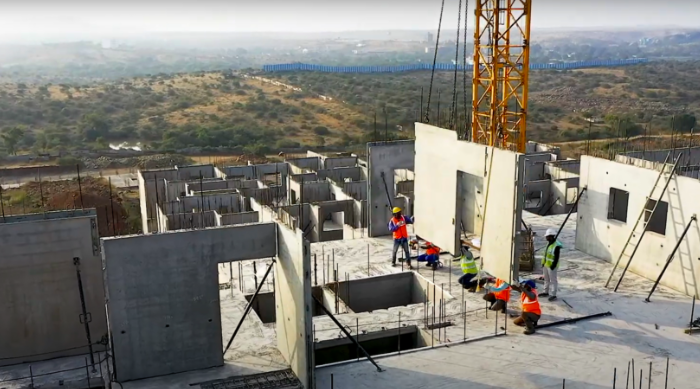BIM Consulting Services: The Future of Smarter, Faster Construction
The construction industry has always been about precision, coordination, and timing. But as projects get larger, deadlines get tighter, and designs become more complex, the tools we use to manage them need to keep up.

The construction industry has always been about precision, coordination, and timing. But as projects get larger, deadlines get tighter, and designs become more complex, the tools we use to manage them need to keep up. This is where BIM consulting services are making their mark—offering a smarter, more efficient way to design, plan, and execute construction projects.
One platform leading the charge is BuildTwin, which brings together all aspects of Building Information Modelling (BIM) into a single, user-friendly space. Instead of juggling multiple tools, endless email threads, and scattered files, teams can centralize everything—planning, budgeting, communication, and execution—into one secure system.
Centralizing BIM for Greater Efficiency
One of the main challenges in construction is that so many moving parts have to work together seamlessly. Architects, engineers, contractors, and suppliers all contribute their expertise—but without a single point of coordination, things can quickly become messy. BuildTwin’s approach solves that problem by acting as the hub for all BIM consulting services, ensuring every team member has access to the latest designs, schedules, and project updates.
This kind of centralization not only improves collaboration but also safeguards critical project data. With everything stored securely on one platform, there’s less risk of outdated files, lost revisions, or communication breakdowns—problems that often lead to costly delays.
Taking BIM Design Beyond the Basics
BIM design is much more than just producing a 3D model. At its best, it’s a fully detailed, information-rich digital representation of a building that can be used at every stage of a project.
On BuildTwin, users can create 3D models that include not only the geometry of the building but also key data like material specifications, cost breakdowns, and scheduling information. This means you’re not just “seeing” the building—you’re interacting with a virtual version that tells you exactly how it will be built, what it will cost, and when it can be completed.
The platform also integrates 3D rendering directly into the process. These renderings are not just pretty pictures—they’re accurate, realistic previews of the finished project, allowing stakeholders to compare design options and make faster, more confident decisions. When teams can see exactly what they’re building before construction begins, surprises during execution become far less likely.
The Power of Effective BIM Coordination
Even the best designs can fail if they’re not properly coordinated. That’s why BIM coordination is such a crucial part of modern construction workflows. It’s the process of ensuring that all disciplines—architectural, structural, mechanical, electrical, and plumbing—are aligned and free from conflicts before they hit the site.
With BuildTwin, coordination becomes much simpler. All stakeholders can review the same up-to-date models, mark up drawings, and track schedules in real time. Potential issues—like clashes between ductwork and structural beams—can be spotted and resolved long before construction begins. This proactive approach reduces on-site delays, prevents rework, and keeps costs under control.
To maintain clarity across all drawings and models, the platform also supports adherence to engineering drafting standards. This ensures every design document is precise, consistent, and ready for use by different teams, regardless of their location.
Integrating Scan to BIM and MEP BIM
In many projects, existing buildings or spaces need to be documented before new work can begin. This is where Scan to BIM technology comes in—using laser scans to create a precise digital version of an existing structure. BuildTwin works with certified vendors to capture high-quality scans and then automates the conversion process into an accurate BIM model. This gives project teams a reliable foundation for renovations, retrofits, or extensions.
For complex building systems, MEP BIM (Mechanical, Electrical, and Plumbing in Building Information Modelling) offers a more specialized solution. MEP systems often involve intricate layouts and interdependencies, and errors here can cause major setbacks. On BuildTwin, MEP BIM is integrated directly into the workflow, making it easier to track components, revisit designs, and manage revisions without losing valuable time.
Supporting Architectural and Structural BIM
Architectural BIM on BuildTwin allows teams to bring aesthetics, functionality, and spatial planning together in one place. By centralizing design tools and collaboration features, architects can iterate quickly and share their vision with stakeholders without delay.
For structural BIM, precision is key. Engineers can access real-time data on materials, loads, and dimensions—no matter where they’re working from. This ensures that every structural decision is based on the most accurate, up-to-date information available, reducing the risk of costly mistakes.
The Evolving Role of the BIM Manager
In a traditional workflow, a BIM manager is responsible for maintaining the integrity of the BIM process—ensuring models are up to date, files are organized, and different disciplines are in sync. On a platform like BuildTwin, their role becomes even more impactful.
Because the platform automates so many administrative tasks, BIM managers can focus on higher-value work—like improving workflows, enhancing model quality, and optimizing coordination between teams. They gain a clearer overview of the entire project, allowing them to identify bottlenecks and address them before they become serious issues.
Why This Approach Works
The combination of advanced BIM consulting services, intelligent design tools, real-time coordination, and automated processes creates a much smoother path from concept to completion. By reducing inefficiencies, minimizing errors, and improving communication, platforms like BuildTwin enable teams to work faster without sacrificing quality.
In an industry where even small mistakes can lead to significant delays and expenses, the ability to visualize, plan, and coordinate every detail before construction starts is a game-changer. And because everything is centralized, teams can work from anywhere without losing access to the information they need.
Final Thoughts
BIM isn’t just a technology—it’s a way of thinking about construction that prioritizes accuracy, collaboration, and efficiency. With the right tools and processes in place, it becomes far easier to deliver projects on time, on budget, and to the highest standards.
Whether you’re an architect refining a design, an engineer ensuring structural integrity, or a contractor managing site operations, having access to a single, well-coordinated BIM environment makes the job simpler and the outcomes better.
As the construction industry continues to evolve, those who embrace platforms that combine BIM design, BIM coordination, and robust management features will be best positioned to succeed. BuildTwin is showing what’s possible when you bring it all together—and the results speak for themselves.





